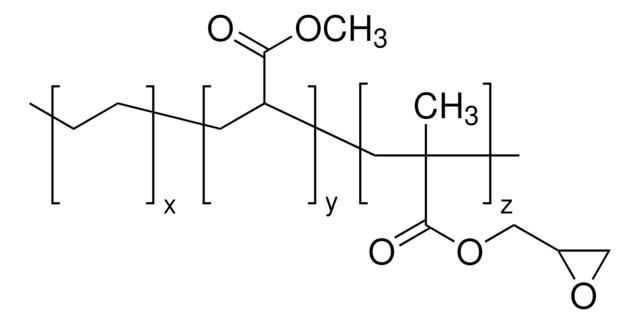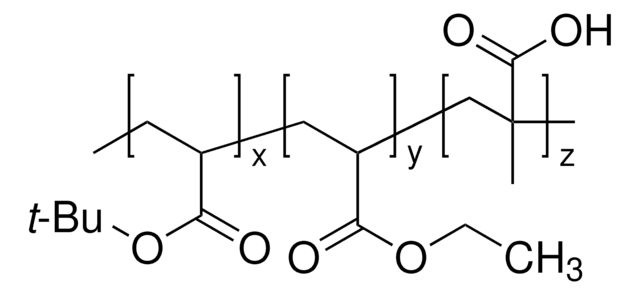426717
Poly(ethylene-co-acrylic acid)
acrylic acid 5 wt. %, beads
About This Item
Productos recomendados
description
drop point 105 °C Mettler
form
beads
composition
acrylic acid, 5 wt. %
hardness
≤2.5 dmm (ASTM D 5, 25 °C)
viscosity
575 cP(145 °C, Brookfield)(lit.)
acid number
37‑44 mg KOH/g
transition temp
Tm 99-101 °C
density
0.93 g/mL at 25 °C
SMILES string
C=C.OC(=O)C=C
InChI
1S/C3H4O2.C2H4/c1-2-3(4)5;1-2/h2H,1H2,(H,4,5);1-2H2
InChI key
QHZOMAXECYYXGP-UHFFFAOYSA-N
¿Está buscando productos similares? Visita Guía de comparación de productos
Categorías relacionadas
Application
Features and Benefits
signalword
Danger
hcodes
Hazard Classifications
Aquatic Chronic 3 - Eye Dam. 1 - Skin Corr. 1A - STOT SE 3
target_organs
Respiratory system
Storage Class
8A - Combustible corrosive hazardous materials
wgk_germany
WGK 3
flash_point_f
Not applicable
flash_point_c
Not applicable
Certificados de análisis (COA)
Busque Certificados de análisis (COA) introduciendo el número de lote del producto. Los números de lote se encuentran en la etiqueta del producto después de las palabras «Lot» o «Batch»
¿Ya tiene este producto?
Encuentre la documentación para los productos que ha comprado recientemente en la Biblioteca de documentos.
Nuestro equipo de científicos tiene experiencia en todas las áreas de investigación: Ciencias de la vida, Ciencia de los materiales, Síntesis química, Cromatografía, Analítica y muchas otras.
Póngase en contacto con el Servicio técnico








